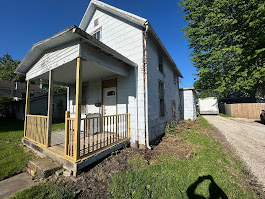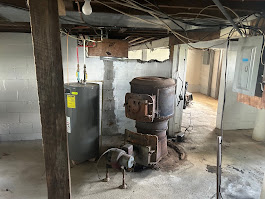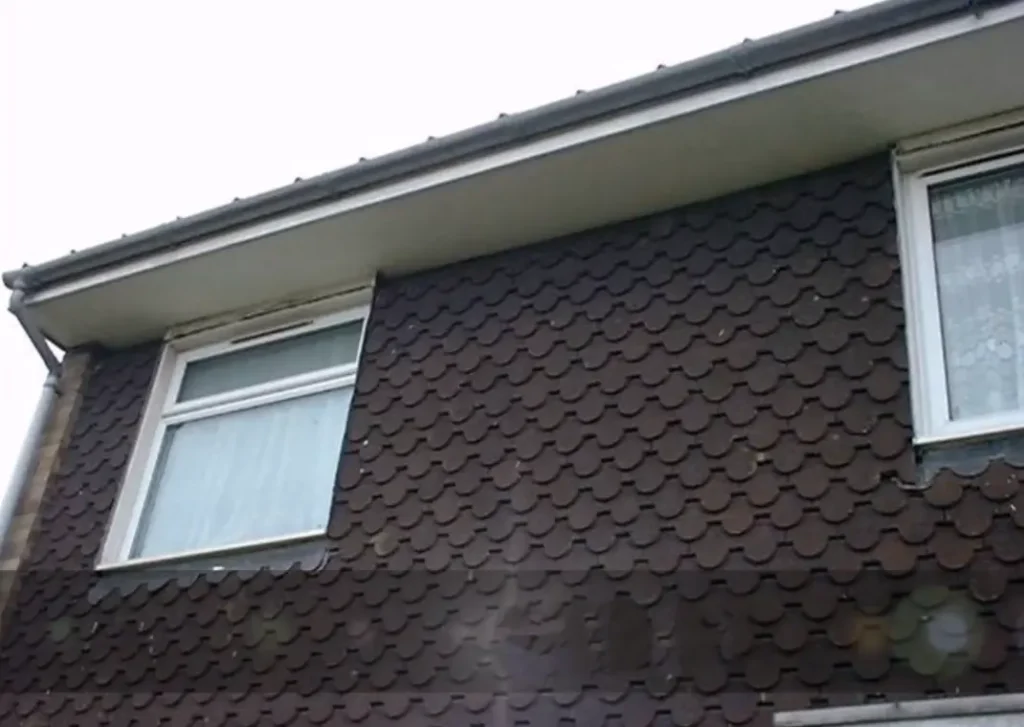In this post, we will discuss What Asbestos looks like. Asbestos is a naturally occurring mineral that looks different depending on its type but generally appears as a fiber or a fibrous material. The most common types of asbestos are:
- Chrysotile (White Asbestos): It appears as curly, fine fibers and is usually white or grayish.
- Amosite (Brown Asbestos): This type has shorter, straighter brown or gray fibers.
- Crocidolite (Blue Asbestos): The fibers are fine, and the color is typically blue or bluish-gray.
- Anthophyllite, Tremolite, and Actinolite are rarer types and may be grayish, white, or green.
Asbestos can be found in various building materials, such as insulation, floor tiles, roofing, and ceilings. When it’s in its natural state, it might look like a powder or granular material, but it is often bound within products like cement, paint, or fabric. It’s important to note that asbestos fibers are not always visible to the naked eye, especially when they become airborne and are inhaled, which can be dangerous to health.

Visual Characteristics of Asbestos
Identifying the visual characteristics of asbestos is vital for safety, particularly in older buildings where asbestos-containing materials (ACMs) may still be in use. While asbestos fibers themselves are generally invisible to the naked eye, there are specific clues that can help with identification:
General Appearance:
Asbestos fibers are typically fine, long, and thin, often resembling delicate, white hairs. When asbestos materials are disturbed, they can release these fibers into the air, posing serious health risks when inhaled.
Raw Asbestos:
Asbestos can look like a greyish or white substance that resembles cotton or wool in its raw form. Chrysotile, a common form of asbestos, tends to be softer and more flexible. On the other hand, crocidolite appears more brittle and has a blue or brown tint.
Forms of Asbestos:
Asbestos can be found in various forms, including:
- Insulation: Common in attics and around pipes, asbestos insulation may appear as batts or loose fill.
- Flooring: Asbestos could be present in vinyl tiles or the backing of sheet flooring.
- Textured Surfaces: Materials like popcorn ceilings and textured wall finishes may contain asbestos fibers.
To safely detect asbestos, it’s important not to disturb any materials that might contain it. If you suspect the presence of asbestos, it’s best to contact a certified professional to conduct proper testing and inspection.
What Does Asbestos Look Like in Different Types

Asbestos Thermal Insulation:
- This type of insulation was commonly used in buildings, especially for pipes, boilers, and other heating systems, due to its excellent ability to retain heat. Asbestos fibers are mixed with other materials to create a thermal barrier, preventing heat loss and reducing energy costs. However, it poses health risks, particularly when disturbed and inhaled fibers.
Asbestos Sprayed Insulation:
- Sprayed asbestos insulation was often used to coat ceilings, walls, and steel structures for fireproofing and thermal insulation. It was especially popular in commercial buildings and high-rise construction because it protects against heat and fire. Over time, the risk of airborne asbestos fibers made this material hazardous, leading to its widespread removal.
Asbestos Textiles:
- Asbestos textiles include products like woven fabrics, ropes, and gloves. These were used in industrial settings for heat resistance, particularly in manufacturing processes where workers were exposed to high temperatures. Asbestos textiles can withstand extreme heat, making them ideal for protective clothing and fireproofing.
Asbestos Gaskets & Washers:
- Asbestos was commonly used in gaskets and washers due to its heat, pressure, and chemical resistance. These were critical in industries like automotive and manufacturing for sealing joints and preventing leaks in machinery and pipes. When damaged, the material can release harmful fibers, creating health risks.
Asbestos Cement:
- Asbestos cement is a durable and cost-effective material for roofing, siding, and pipes. The material combines cement and asbestos fibers, providing strength, heat resistance, and durability. However, asbestos fibers can become airborne when disturbed, leading to serious health concerns such as lung diseases and cancer.
Asbestos Paper:
- Asbestos paper was a heat-resistant material in industries requiring high-temperature resistance. It was often used in electrical and mechanical insulation, as well as in certain types of industrial filters. The paper was durable and flexible, but its use has been discontinued due to health risks from fiber exposure.
Asbestos Vinyl:
- Asbestos vinyl was commonly used in flooring materials and tiles due to its durability and resistance to fire and heat. It also had soundproofing properties. However, over time, the risks associated with asbestos in vinyl became apparent, leading to banning its use in new products.
Asbestos Resin:
- Asbestos resin combines asbestos fibers and resins to create molded products that are highly resistant to heat and corrosion. These were used in various industrial applications, including automotive parts and brake linings. The long-term exposure to asbestos dust from these products has been linked to several respiratory diseases.
Asbestos Decorative Coating:
- Asbestos was used in decorative coatings for residential and commercial buildings, particularly in textured paints and stucco. The coatings offered heat resistance and were popular in the mid-20th century. Unfortunately, asbestos fibers in these materials, when disturbed or deteriorated, pose a significant health hazard.
What does asbestos look like under a microscope?
Under a microscope, asbestos looks like long, thin fibers, often with a distinct, needle-like, or curly shape. The appearance can vary depending on the type of asbestos:
- Chrysotile (White Asbestos): It appears as curly, flexible fibers that are often twisted or serpentine in shape. Under the microscope, these fibers are fine and smooth and sometimes form clusters.
- Amosite (Brown Asbestos): The fibers are more rigid and straight. They often look like needle-like structures with sharp ends under a microscope.
- Crocidolite (Blue Asbestos): This type has thin, straight fibers that appear sharp and crystalline under a microscope. They are often highly translucent, which makes them look almost like thin glass filaments.
- Other Types (Anthophyllite, Tremolite, and Actinolite): These can look fibrous, with varying colors (greenish, gray, or white), and some might have a more complex, spiky shape under magnification.
The fibers are generally so fine that they are not visible to the naked eye, but they can be seen as distinct, hair-like structures under high magnification. The fibers can be grouped in many cases, especially with certain types, giving them a slightly “fluffy” appearance. When asbestos is airborne or disturbed, these microscopic fibers are a serious health hazard if inhaled.
What does asbestos look like in old homes?
Older homes commonly use asbestos in various materials so that you may find it in different forms. It’s often hidden in areas like insulation, flooring, and roofing, and it might look like:
- Insulation: Asbestos was frequently used in pipe insulation, attic insulation, and around boilers. It often appears as a soft, fibrous material that may be white, gray, or off-white. Sometimes, it’s in a blanket or cloth form, which could be textured and wrinkled.
- Ceiling Tiles or Popcorn Ceilings: Asbestos was used in some ceiling tiles and textured ceilings (known as “popcorn” ceilings). These tiles may appear as small, square, or rectangular panels with a speckled texture. Popcorn ceilings are often white or light-colored, with coarse or bumpy texture.
- Flooring: Vinyl floor tiles, especially those from the mid-20th century, may contain asbestos. These tiles could be in various colors, including black, brown, and beige, often with a flecked or marbled pattern. In some cases, you might also find asbestos in the backing of old linoleum flooring.
- Roofing Materials: Asbestos was sometimes used in shingles, roofing felt, and cement products. The shingles may have a slightly rough texture and be dark gray, brown, or slate-colored. Depending on the specific product used, roofing materials appear solid or textured.
- Cement Products: Asbestos was mixed into cement products like siding, shingles, and fireplaces. These materials may look like ordinary cement, usually gray or light-colored, but with a slightly rough texture or more pronounced surface features.
- Pipe Wraps or Furnace Parts: Asbestos insulation was often wrapped around pipes and furnace ducts to prevent heat loss. It could appear as a fibrous, soft material, often white or gray, that may crumble or disintegrate over time.
If you suspect asbestos in your home, it’s important to avoid disturbing it. Asbestos fibers can be harmful when released into the air and inhaled, so any suspected asbestos-containing materials should be handled by professionals trained in asbestos removal.
What does asbestos look like in ceiling tiles?
In-ceiling tiles, asbestos typically appears as either textured or smooth panels. Here’s how it might look:
- Textured Ceiling Tiles (Popcorn Ceilings): These tiles often have a rough or bumpy texture and are usually white or off-white. The texture is typically uneven and can look like small lumps or bumps, resembling popcorn or cottage cheese. This style was popular in homes built before the 1980s.
- Smooth Ceiling Tiles: These tiles look like traditional, flat panels with clean surfaces. They are often square or rectangular and are usually white or light-colored. The surface might appear speckled, with small dots or patterns, giving them a slightly textured feel, even though they are smooth to the touch.

Asbestos-containing ceiling tiles can be found in acoustic tiles (used to absorb sound) and decorative tiles, often in older homes built between the 1940s and 1980s. They may not always be visibly distinct as they contain asbestos unless you inspect them closely or have them tested because they may look similar to modern ceiling tiles.
If you see damaged or crumbling ceiling tiles, it’s important not to disturb them, as asbestos fibers can become airborne and pose a health risk when inhaled. In such cases, contacting a professional for testing or removal is best.
What does asbestos look like on pipes?
Asbestos insulation on pipes looks like a white, fibrous material. It can be soft and fluffy or firm and rigid, often wrapped around pipes to help with heat resistance. The fibers may appear loose or compact, depending on the type of asbestos used. Over time, this material can break down, leaving dust or small chunks that may look like white or grayish clumps. In older buildings, you may also see asbestos in the form of cement sheets or covering on pipes.
If the asbestos is damaged, the fibers can be released into the air. This is a health risk, as breathing in asbestos fibers can cause serious lung conditions.
It’s important to handle asbestos with care. If you suspect there is asbestos on your pipes, avoid disturbing it. Professional testing and removal are necessary for safety.
FAQs
What does asbestos look like on walls?
Asbestos in walls typically appears as a gray or off-white fibrous material. It might be found in insulation, textured finishes, or as part of older drywall or ceiling tiles. The fibers are microscopic, so they are usually not visible unless the material is damaged or disturbed. If unsure, a professional inspecting and testing for asbestos is always best.
What does asbestos look like on wood?
Asbestos on wood: Asbestos itself doesn’t usually appear as a distinct color on wood. It could be present in older materials like insulation around pipes, adhesives, or coatings. It might look like a dense, fibrous material or powder when part of a surface layer, but you likely won’t see it unless it is damaged or disturbed.
What does asbestos look like in the lungs?
Asbestos in lungs: When asbestos fibers are inhaled, they don’t form visible structures in the lungs that you can see without medical imaging. Over time, asbestos exposure can lead to scarring, known as asbestosis, or even lung cancer, but this would only be noticeable through medical tests like X-rays or CT scans. On an X-ray, you might see damage patterns such as lung fibrosis, which looks like small, dense spots or areas of scarring in the lung tissue.
What does asbestos look like in ceiling tiles?
Asbestos in ceiling tiles: Asbestos can appear as a white or grayish, fibrous material mixed into the tile. Older ceiling tiles, especially those made before the 1980s, may have a slightly rough texture or a pattern of speckles. When disturbed, the fibers can be released into the air, making handling dangerous without proper precautions.
What does asbestos look like in the attic?
Asbestos in the attic: In an attic, asbestos might be found in insulation materials, like loose-fill or batt insulation, and in products like roofing shingles or duct insulation. The material often appears as a dusty, granular substance or as thick, fibrous mats. It may also be present in older pipes, heating systems, or as part of fireproofing materials. As with ceiling tiles, asbestos fibers can become airborne if disturbed and pose a health risk.
what does asbestos cement board look like?
Asbestos cement boards typically appear as flat, rigid sheets with a smooth or slightly textured gray or white surface, often resembling fiber cement or concrete.
What does asbestos look like in walls?
Asbestos in walls often appears as gray, white, or off-white fibrous material, resembling coarse wool or cotton, and may be found in insulation, textured coatings, or cement sheets.
What does asbestos powder look like?
Asbestos powder appears as a fine, fluffy, white or grayish dust with tiny, fibrous particles that may resemble powdered chalk or soft, cotton-like material.
What does asbestos in furniture look like?
Asbestos in furniture may appear as grayish-white, fibrous padding, insulation, or backing material, often found in older heat-resistant tables, ironing boards, or fireproof cabinets.
What does natural asbestos look like?
Natural asbestos appears as fibrous, needle-like crystals that can be white, gray, green, blue, or brown, often resembling coarse fabric or hair embedded in rock formations.
What does blue asbestos look like?
Blue asbestos (crocidolite) has a distinct dark blue or steel-blue color with fine, hair-like fibers that appear soft, silky, and interwoven, often forming fibrous, needle-like clusters.

